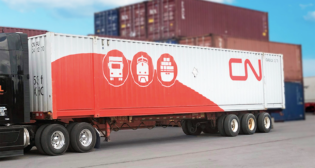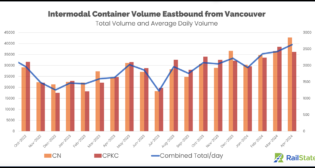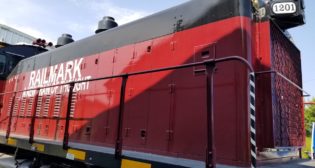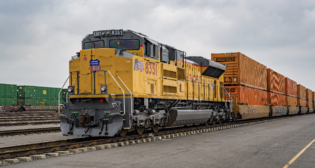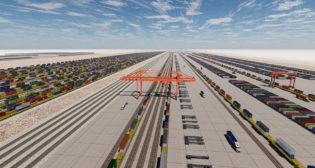
Minneapolis’ Metro Blue Line Extension Moving Ahead
Written by Marybeth Luczak, Executive EditorMinnesota’s Hennepin County Board of Commissioners has approved a contract with the Center of Urban and Regional Affairs (CURA) to establish an Anti-Displacement Workgroup that will help advance the Metro Blue Line Extension LRT project in Minneapolis; construction, however, is still many years away.
The planned light rail route would run from the existing Target Field Station in downtown Minneapolis northwest through Golden Valley, Robbinsdale and Crystal to Brooklyn Park (see map below). The new anti-displacement group’s aim is to support residents, businesses and equitable development along the route, which includes some of the most impoverished and transit-dependent communities in the Minneapolis area.
After years of unsuccessful discussions with BNSF regarding colocation of light rail and freight rail in the Bottineau Corridor, Hennepin County and the Metropolitan Council (Met Council) decided in August 2020 to move the project in a new direction and explore community-supported routes that do not use freight rail property.
Last spring, through the project’s public engagement process, community partners voiced displacement prevention as a top priority, according to Met Council. “Community and business members shared while investment has many benefits, rising costs of housing and changing neighborhood dynamics could displace current residents and businesses both directly and indirectly from their community.”
“Hennepin County shares these concerns,” Hennepin County Commissioner Jeff Lunde said. “We recognize displacement pressures directly related to light rail projects can begin well before the line is even under construction. We want to have policies in place to support the communities that are intended to benefit from such a significant infrastructure investment before it is too late. We want to set a new national standard for how agencies work with community and other partners early to plan for and minimize pressures associated with major infrastructure investments that end up displacing the very residents those projects are intended to serve.”
This past summer, Met Council and Hennepin County released revised route options (see map above). “Based on technical considerations, community input and past project work, we believe these routes present the best opportunities to deliver a light rail project that maximizes community benefits and connects even more people to jobs, education, healthcare and other key destinations,” Met Council reported. “These routes are intended to advance a conversation many years in the making with the goal of identifying a single community-supported route by the end of this year to advance through official design and review processes.”
What CURA Will Do
Over the next 18 months, “CURA will draw from their extensive partnerships with housing and business organizations to develop anti-displacement strategies and an implementable plan,” according to Met Council. That plan will outline the needs found in the community, actionable policy steps, and potential funding strategies and resources.
The Blue Line Extension Anti-Displacement Workgroup will be central to CURA’s work, the Met Council said. The group will comprise community leaders, residents and businesses owners potentially most impacted by the threat of displacement, as well as other experts, staff and policymakers from Hennepin County, Metropolitan Council, and the Blue Line Extension corridor cities of Minneapolis, Robbinsdale, Crystal, and Brooklyn Park. CURA will also seek input from more than 5,000 individual corridor residents and stakeholders.
Next Steps
“We will move at the speed of trust,” Met Council reported. “The release of the revised potential routes is a first step in a much larger process before construction of the Blue Line Extension begins. Over the coming months, project partners will be active in [the] community, attending neighborhood meetings and conducting direct outreach. We are working with 17 community and cultural organizations to support a robust engagement process and ensure all voices are heard.
“The project’s goal is to identify a single community supported route option by the end of 2021. We will continue to work closely with communities to align technical and engagement work as well as identify station locations.
“Following the identification of a single community supported route, environmental review and engineering work will begin. This can be a long process and construction of the line is still likely many years away.”
